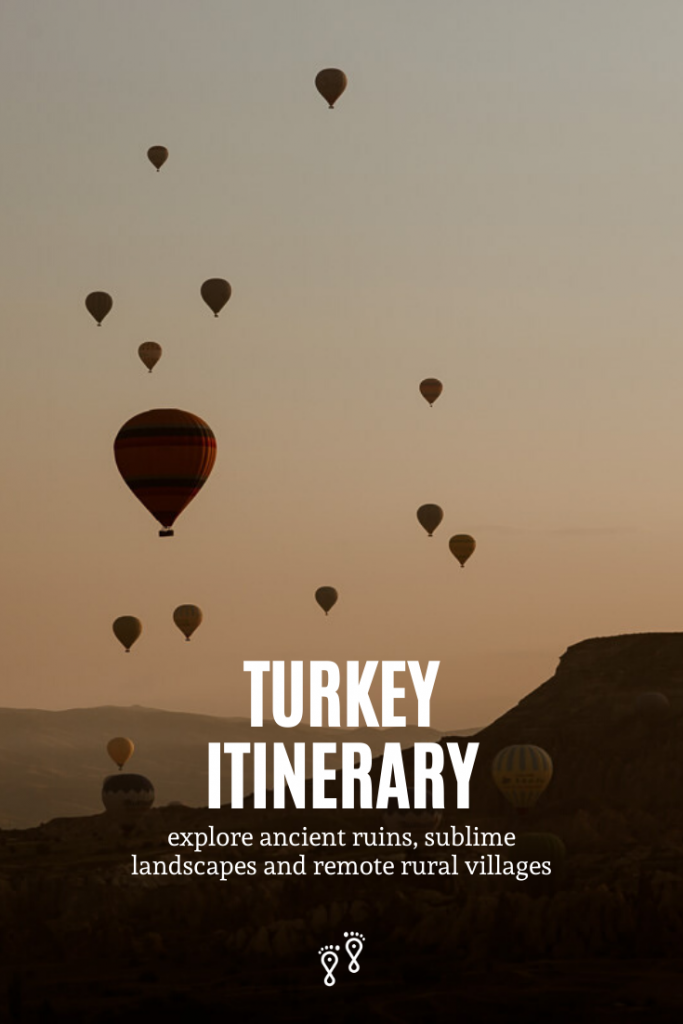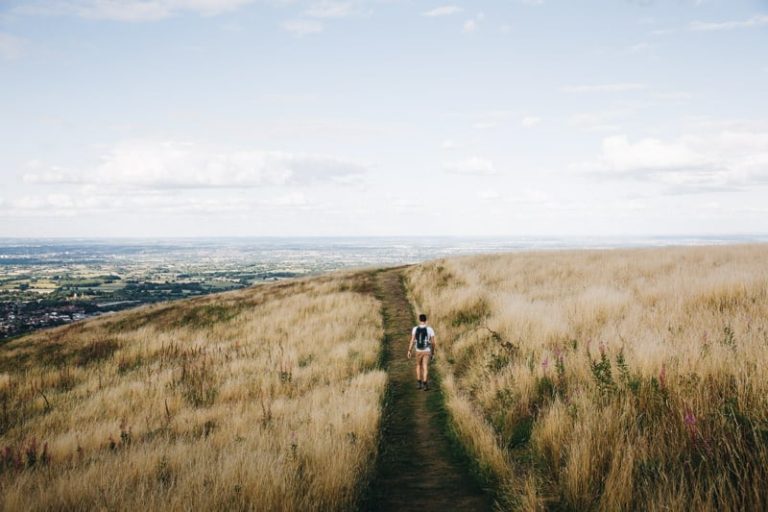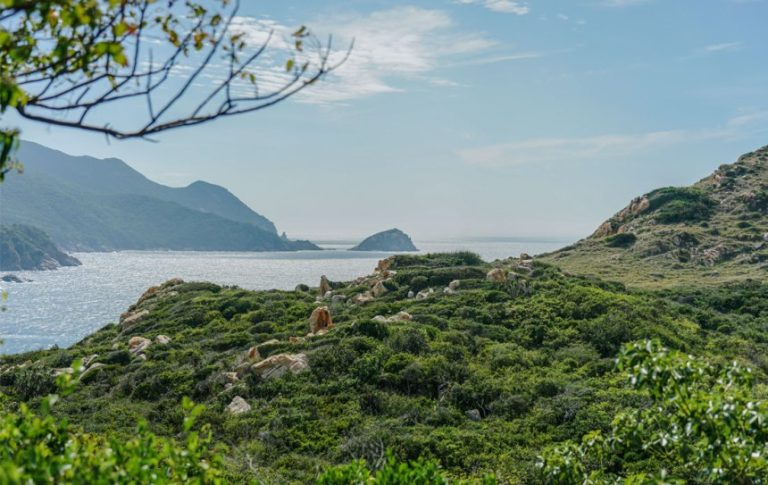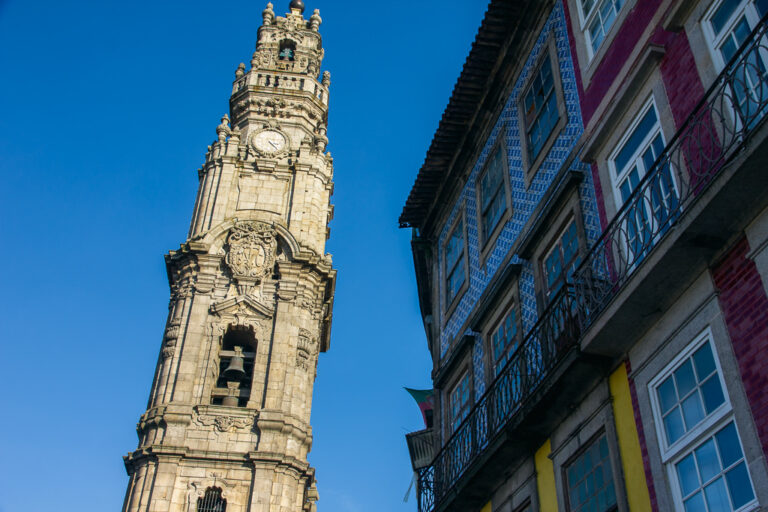A country rich in tradition, culture and mint tea emerged from our 2-week Turkey Itinerary. From mesmerising landscapes to intriguing historical cities, here’s how to make the most of it.
Turkey is an intoxicating destination.
The great empires that clashed here have left towering Roman and Greek ruins, frescoed Byzantine churches, Islamic Mosques, Middle Eastern palaces, and an exotic cultural DNA.
This melting pot of influences is felt everywhere from the remnants of Istanbul’s mighty past to its contemporary art scene and cafes lining busy squares. And yet modernity has not spread everywhere. Drive through the backroads outside the major cities and you will find rural villages where a subsistence living is still the way of life.
From the ancient crumbling ruins to the unique landscapes of Pamukkale and Cappadocia, Turkey is a mesmerising place. Where the land, like the culture, has been sculpted over aeons.
This is a country with a story to tell – here’s how to spend 2 weeks in Turkey.
Booking your trip via the links on this page (or on our book page) will earn us a small commission, at no extra cost to you. Thanks for your support – Paul & Mark.

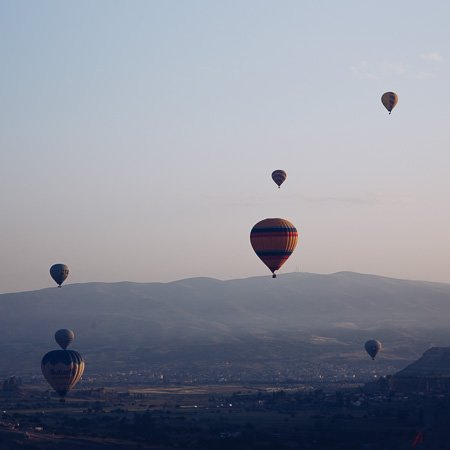
Start // To begin these 2 weeks in Turkey fly into Izmir’s Adnan Menderes International Airport, hire a car and drive to Selçuk (45 minutes), ready to start this itinerary the following day.
DAY 1 / ANCIENT & BYZANTINE RUINS
Stay – Selçuk | Travel – About 10 minutes; drive to Ephesus.
TEMPLE OF ARTEMIS
This morning, stop off at the Temple of Artemis, one of the Seven Ancient Wonders of the World, just outside Selçuk. In its day it was the largest temple in the world, today it’s just a single column made up of debris from the site.
EPHESUS
Next, continue on to Ephesus. As the capital of Roman Asia Minor, it’s packed with ancient architecture reflecting the power and wealth of the city; it’s possibly the best Roman ruin in the world. The Library of Celsus is its iconic image of Ephesus, but pay the extra ₺20 to go inside the covered terrace houses for the incredibly well-preserved frescoes. It takes about 2 hours to explore the entire site and its one of our favourite historical places in Turkey.
Grab lunch in Selçuk, a compact town with a relaxing vibe. There are a few tourists in this area but most stay at Kudasai on the coast, so Selçuk is a refreshingly local experience.
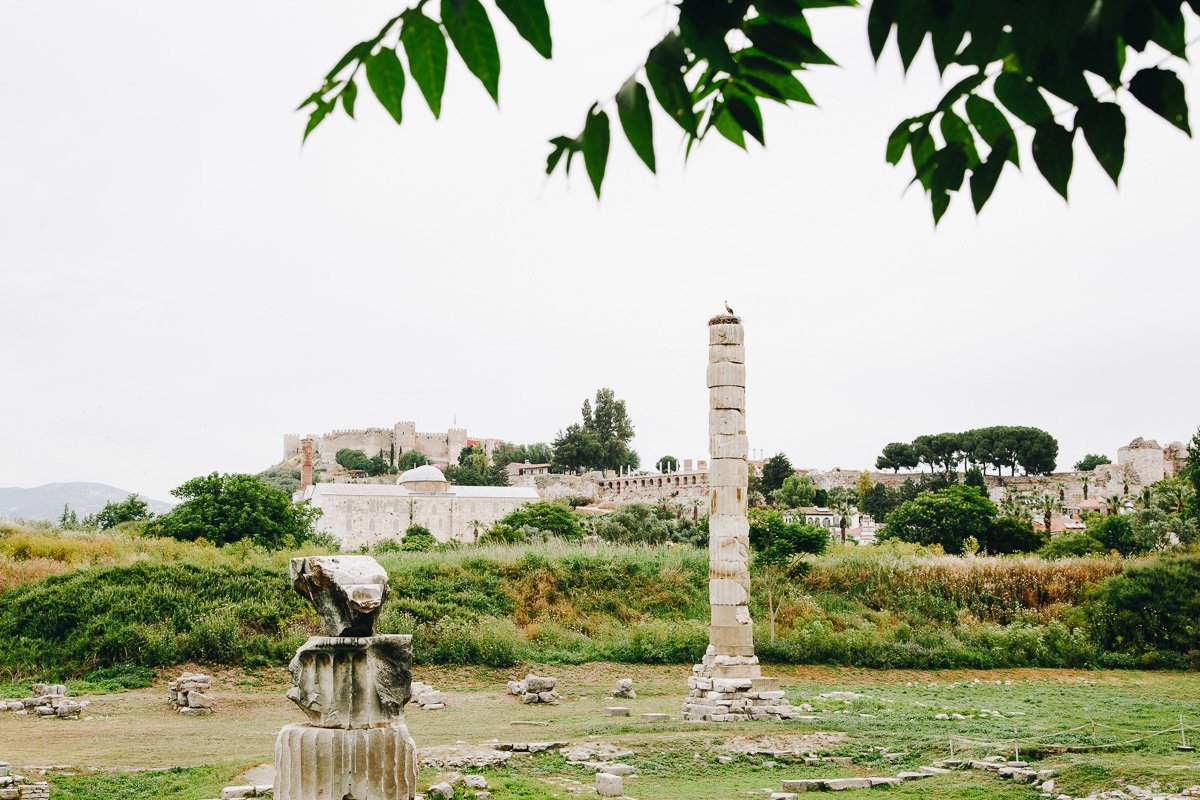

CHURCH OF ST JOHN IN SELÇUK
After lunch head up to the Church of St. John and Ayasaluk Castle. The church itself far outdid our expectations. It’s built on the resting place of St John who believers say spent his final days in Ephesus where he wrote his gospel and died aged 100 years old. He is buried here according to his last request.
The ruins you see today are from the 6-domed church that was rebuilt in the 6th century and survived for almost 800 years. It was finally destroyed by a large earthquake around 1360.
AYASALUK CASTLE
From the church ruins, walk up to the Ayasaluk Castle. It was originally built by the Byzantines in the 6th century, then reconstructed by the Ottomans.
Finally check out the Ephesus museum, a remarkable collection of statues and reliefs found at Ephesus, before grabbing dinner in town.
WHERE TO STAY IN SELÇUK

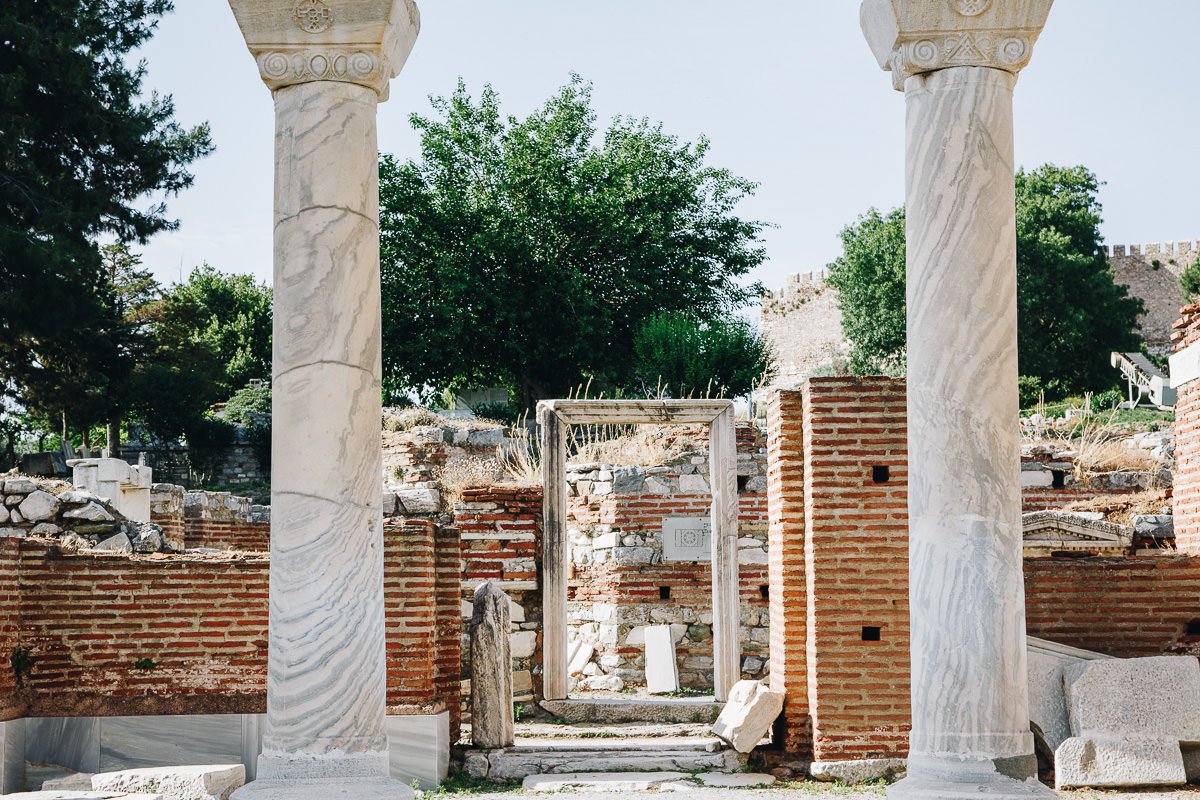
DAY 2 / ANCIENT RUINS & VILLAGES
Stay – Selçuk | Travel – 4 hours driving around the ruins and back to Selçuk.
PRIENE
This morning drive to Priene, 55 minutes’ from Selçuk. Priene is an ancient Hellenistic hill town with fantastic views overlooking the valley and bits of ancient rubble littering the ground. Check out the theatre, the basilica and the Temple of Athena.
MILETUS
Then drive a further 20 minutes to the ancient site of Miletus – a massive sprawling site that could consume many hours. However, as most of the area is an unexciting pile of rubble stick to the theatre, the massive Faustina Baths and the Iconic Colonnade.
TEMPLE OF APOLLO
Next, head to the Temple of Apollo (another 25 minutes’ drive) in Didim. The huge columns of this ancient site are a reminder of how colossal this temple once was. Nowhere else on this 2-week Turkey itinerary demonstrates so clearly the size, power and might with which the Romans honoured their Gods.
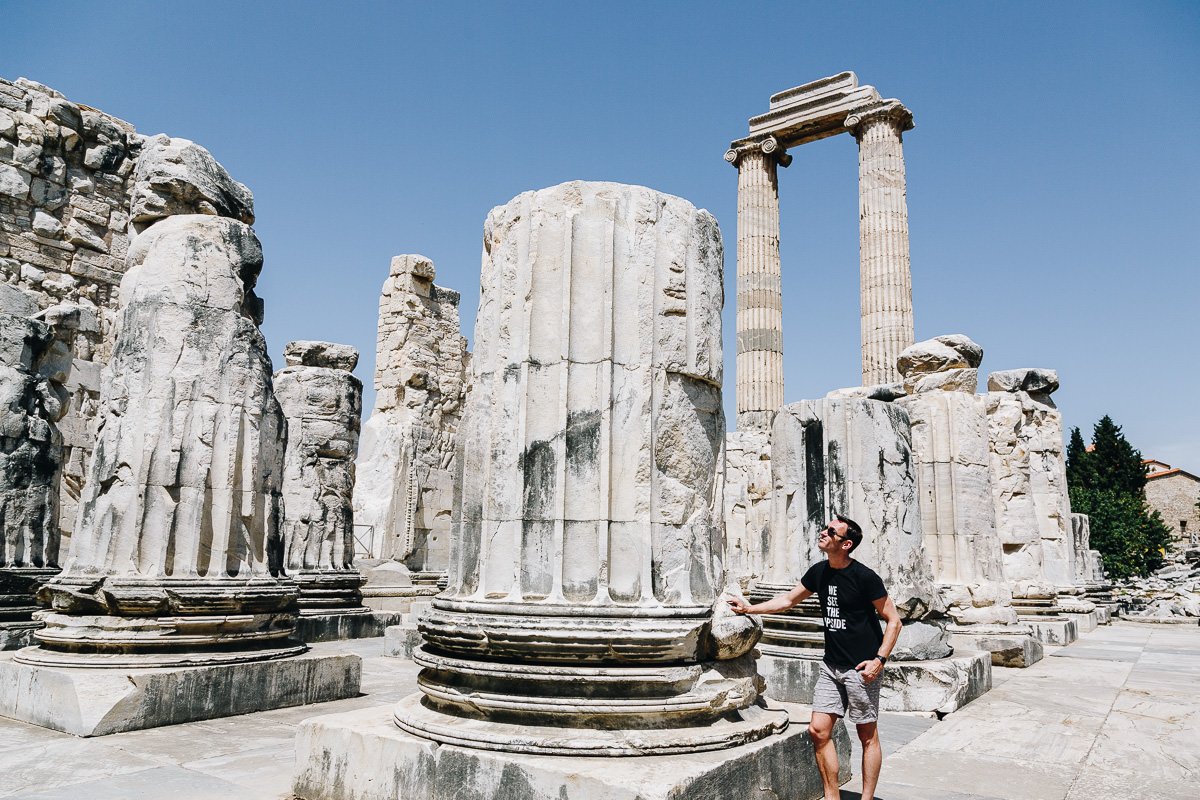

KAPIKIRI & HERAKLEIA
From Didim, drive 50 minutes to Kapıkırı through the beautiful Bafa Gölü National Park. Kapikiri – a rural farming village that is slowly absorbing tourism – sits just above the lake and gives a fascinating insight into subsistence living in Turkey. It takes less than an hour to stroll every lane and watch the local community go about their daily lives.
Around the lake there are some old ruins and rock tombs from the ancient sight of Herakleia worth exploring. After which, have a swim in the lake, and enjoy a beer at one of the small cafes in Herakleia. Not many people come here, which makes it all the more special and a highlight of our Turkey itinerary.
Head back to Selçuk for the evening.

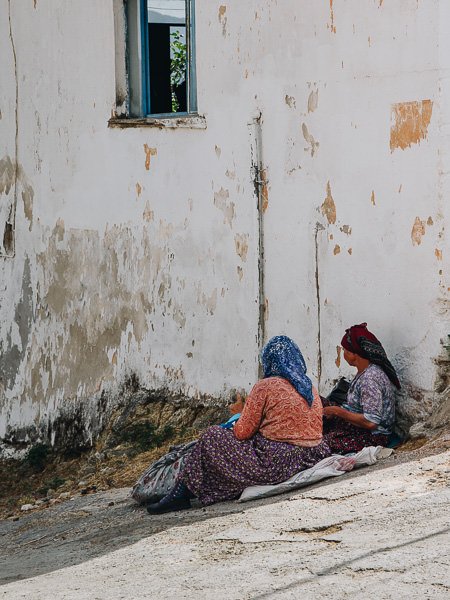

DAY 3 / WILDERNES SITES & PAMUKKALE
Stay – Pamukkale | Travel – 3 hours, 40 minutes driving from Selçuk to Pamukkale.
APHRODISIAS
Drive to Aphrodisias, a Roman city set in the Anatolian wilderness (2 hour 20 minutes from Selçuk). The excellent museum has a room dedicated to the marble reliefs that used to adorn the Sebasteion, a temple to deified Roman Emperors and their Gods. It’s a thoroughly interesting historical site and a beautiful spot to stroll around. The whole place takes about 2 hours to explore.
Returning to the car drive 1 hour 20 minutes to Pamukkale, through verdant green fields dotted with trees, as if designed by artists.
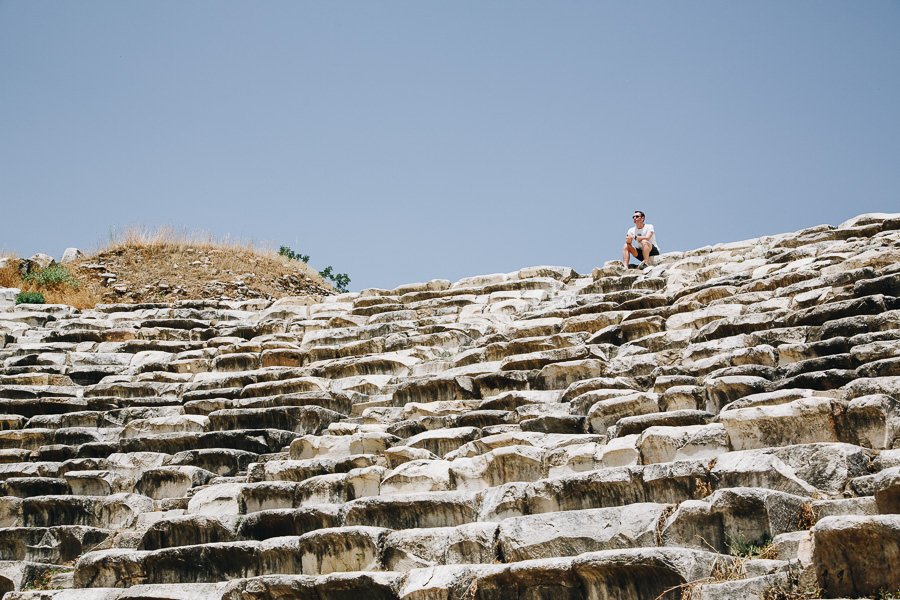

HIERAPOLIS & PAMUKKALE
There are two exellent sites to explore in Pamukkale; the Roman city of Hierapolis and the white calcite tavertine pools. The ruins sit windswept on the hill and contain a well-preserved theatre and the Martyrium of St. Philip the Apostle.
But the Travertines – blue water set in smooth white calcite pools – are the main reason to visit Pamukkale. You can walk on the Travertines (without shoes) and bathe in them if you wish, so bring your swimmers. We recommend you head to the balcony west of the Travertines for sunset, it’s the best place for photos and it was one of our favourite experiences in Turkey.
The entrance ticket covers both sites, and you could spend 5 to 6 hours exploring everything. You can only enter during opening hours, but you can leave anytime you like. Take food or drink with you because, for the only time on this 2-week Turkey itinerary, prices were pure extortion.
WHERE TO STAY IN PAMUKKALE
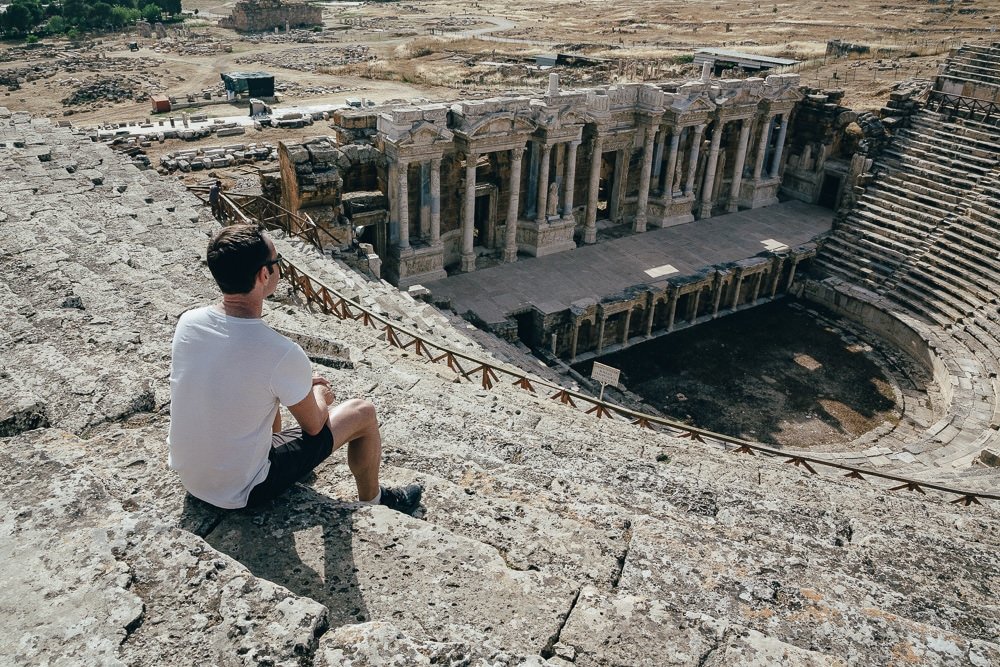
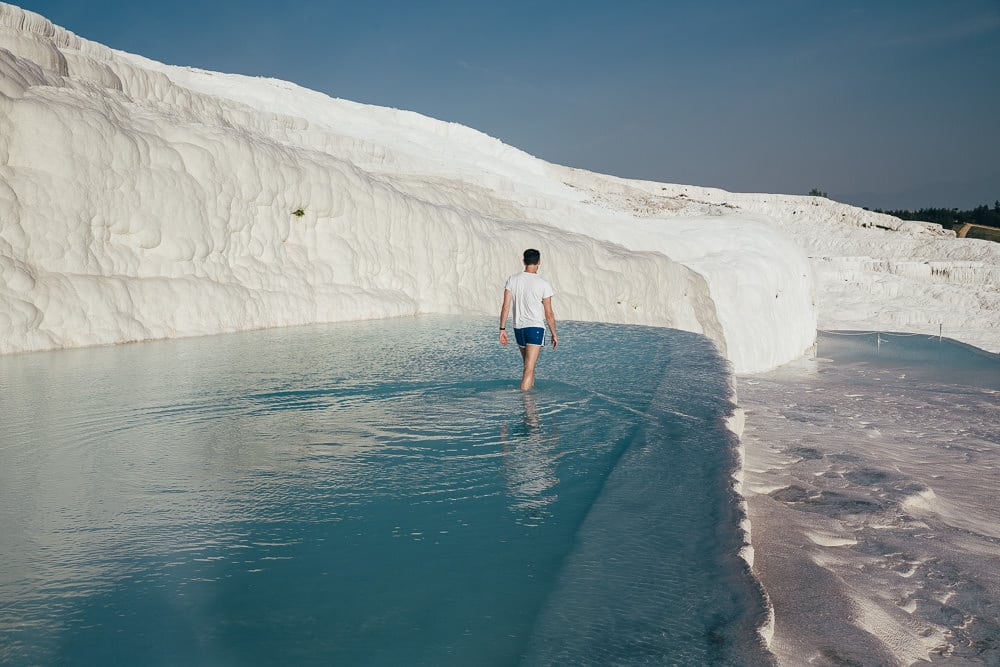

DAY 4 / EGYPTIAN & ROMAN TEMPLES
Stay – Bergama | Travel – 3 hour 40 minute drive from Pamukkale to Bergama.
MODERN-DAY BERGAMA
This morning take the 3 hours and 40-minute drive to Pergamon (modern-day Bergama) and grab lunch at Paksoy Pide (Turabey Mahallesi, İstiklal Meydanı, 39 Bergama) in the centre of town for a traditional Turkish bite.
Most tourists who come to Bergama, stay on the coast and make a day trip to Pergamon. But on the coast, you’ll be dining on bowls of chips from overpriced tourist venues with laminated menus. Bergama on the other hand is a genuine Turkish town full of friendly engaging locals. If you don’t understand the menu, just point at something and you’ll be away.
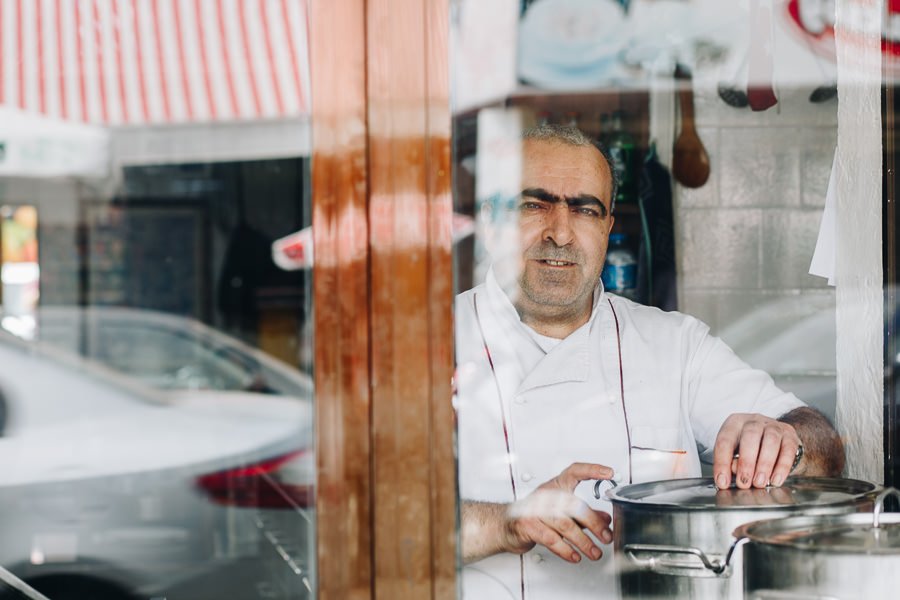
THE RED HALL
After lunch, head to the Red Hall. In the 2nd Century CE when it was completed, it was the largest complex of buildings in Pergamon. Even today its scale is impressive. It is thought the complex originally honoured Egyptian deities, but in the 5th century, the Christians built a church inside the large Red Hall. The ruined walls are still there today.
PERGAMON ACROPOLIS
In the late afternoon, walk to the teleferik and take the cable car up to Pergamon Acropolis. The hillside is dotted with excellent ruins, but the unmissable highlights are the Trajan Temple with its remaining columns holding up a well-preserved pediment; the grand theatre built into the hillside; and the discarded ruins that lay in the overgrown weeds at the base of the temple of Dionysus. Sadly, the Pergamon Great Altar is just a heap of stones compared to what now stands in the Pergamon Museum in Berlin.
WHERE TO STAY IN BERGAMA
- For a small friendly stay with great facilities, we highly recommend Attalos Suites.
- The homemade breakfast at Aristonicus Boutique Hotel is a great start to the day.
- For panoramic views of Pergamon Acropolis, Hera Hotel also has a very well-stocked wine cellar.

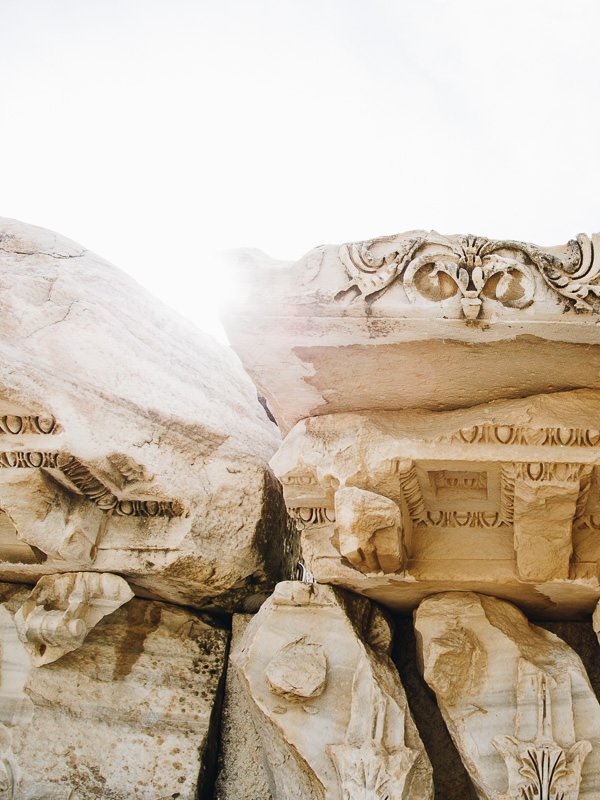

DAY 5 / AYVALIK, THEN FLY TO ISTANBUL
Stay – Istanbul | Travel – 1 hour, 20-minute drive from Bergama to Ayvalik; 2 hours drive from Ayvalik to Izmir; 1 hour, 10-minute flight; 1-hour connection into Istanbul.
AYVALIK
This morning, drive to Ayvalik. Ayvalik is a diving centre with an atmospheric old town a few lanes back from the front. It’s full of crumbling facades, cute bohemian cafes and various flea markets. The best area is along Barbaros Caddesi near the Aivali Food and Art shop. Parking on the front or in a car park just off the front is very straightforward.
GETTING FROM İZMIR TO ISTANBUL
This afternoon drive to İzmir, drop off the hire car and fly to Istanbul. Domestic flights arrive at either Sabiha Gokcen International Airport or the new Istanbul Airport. From both airports, you can take the Havaist Shuttle into Istanbul which will take anywhere between 1 and 1.5 hours depending on traffic. Alternatively, take a Yellow Taxi from the official taxi ranks outside the terminals.
If you’re in a group, pre-booking a private transfer may be an economical way to get into Istanbul.
Once in Istanbul, spend the late afternoon acclimatising to this buzzing metropolis before finding a rooftop bar to take in sunset. All our highlights are in our top experiences in Istanbul.
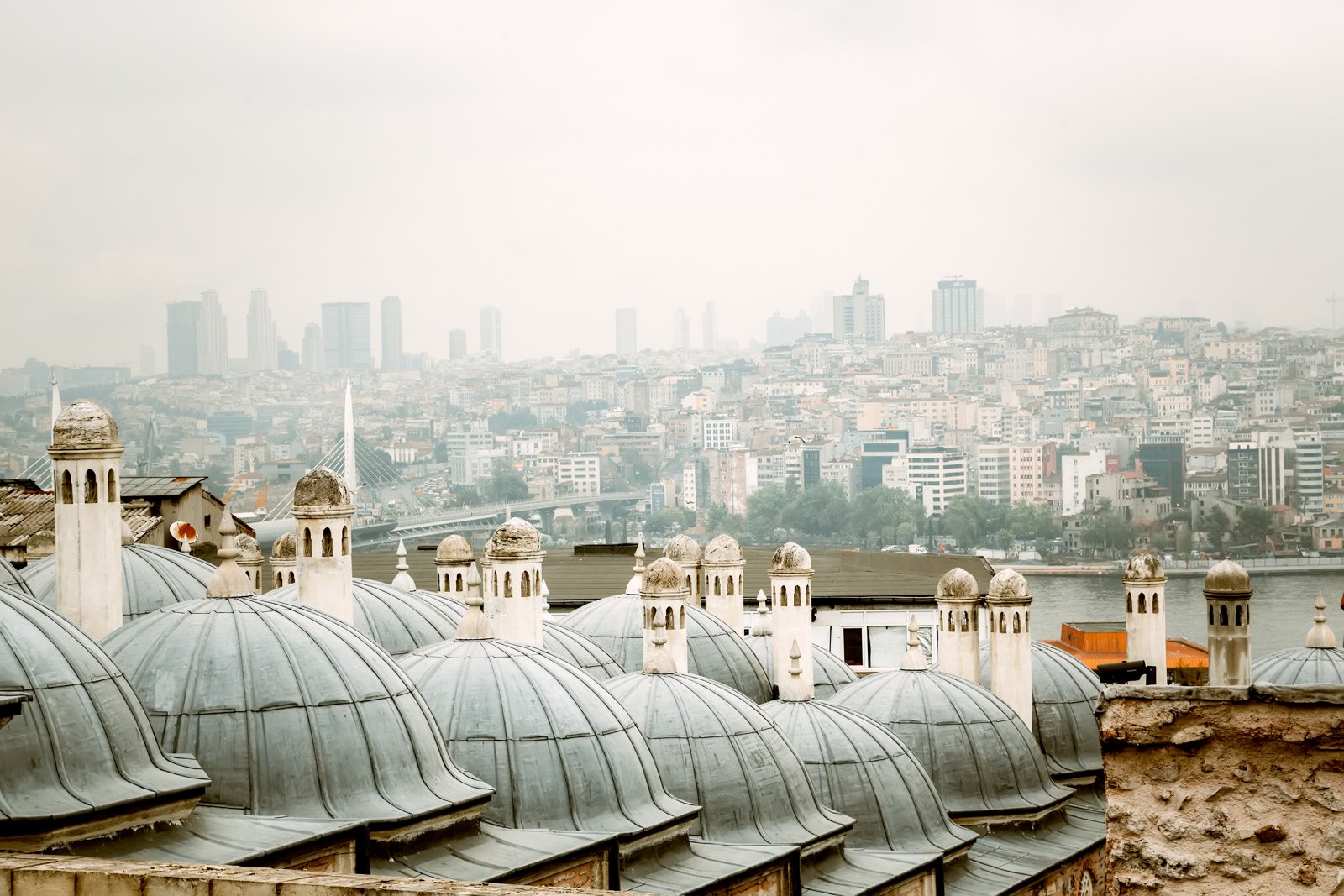
DAY 6-10 / EXPLORING ISTANBUL
Historically significant, politically diverse and artistically cool, Istanbul is one of our favourite cities in the world. Stroll through exquisitely designed mosques and ancient Byzantine churches; explore the playground of two remarkable world empires, and discover lively neighbourhoods spanning both sides of the Bosphorus.
MORE READING
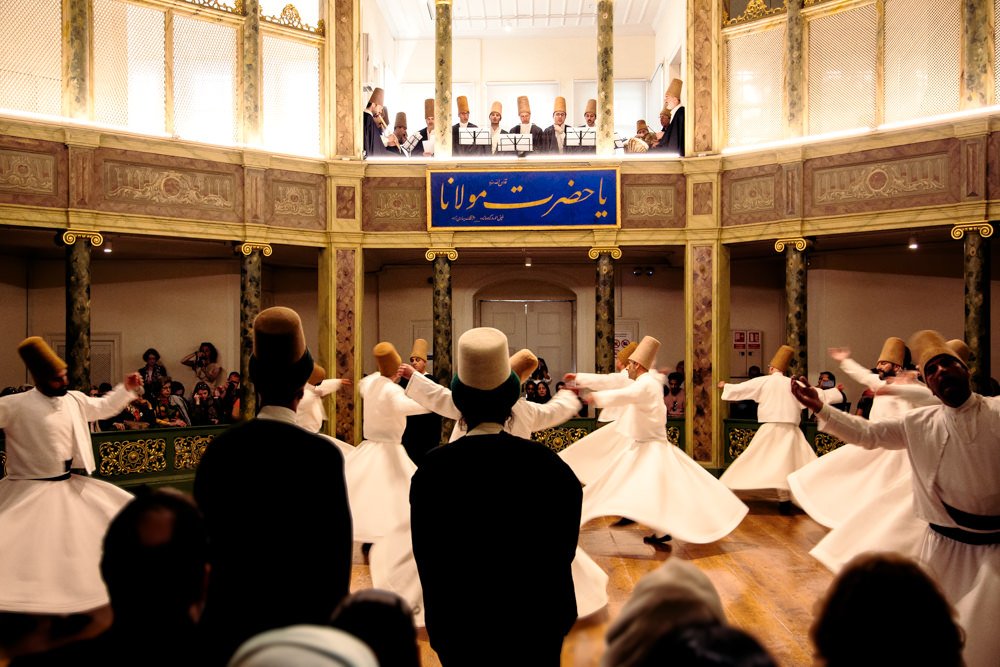
DAY 11-14 / CAPPADOCIA
Cappadocia is a beguiling landscape with fairy tale chimneys and magical hot air balloon rides. But there is so much more to this pint-sized attraction. While it’s a popular tourist centre, the surrounding villages have maintained a relaxed local feel, and the hiking is some of the most unique we have experienced anywhere.
GETTING FROM ISTANBUL TO CAPPADOCIA
There are two airports at Cappadocia both of which have arrivals from Istanbul. Nevşehir is around 40 minutes from Göreme, the main centre in Cappadocia. Kayseri Airport is around 1 hour from Göreme. To get to your hotel, you could book an airport transfer in advance. However, we recommend hiring a car for Cappadocia which will allow you to see a lot more.
MORE READING

HOW TO GET TO TURKEY
Most travellers will need an entry visa for Turkey, which can easily be organised online here: https://www.e-visaturkey.org
For this itinerary, we arrived in Izmir Adnan Menderes Airport to explore the ancient ruin sites, before flying to Istanbul, then flying to Cappadocia.
Rental cars can be collected from, and returned to Izmir Airport and all major car rental companies operating there. Car rental booths are in the international and domestic arrivals halls. In Cappadocia, Kayseri Airport has a better range of hire cars than the airport at Nevşehir.
HOW TO GET AROUND TURKEY
Istanbul’s public transport system is excellent. Metro, funiculars, and trams all interconnect providing cheap, easy and quick access across town. Buy an Istanbul Travel card and just keep topping it up as you go.
Outside of Istanbul, the public transport system is set up for locals and not for tourists and driving in Turkey is much easier than many think. Hiring your own car for the 5 days travelling around the ancient ruins and the 4 days in Cappadocia will save a lot of time.
Car Rental // We use rentalcars.com who compare prices across all the major car rental companies.

WHEN IS THE BEST TIME TO GO TO TURKEY?
Many official museums in Turkey have summer and winter opening times. In winter the sites shut 2 hours earlier, which significantly curtails how much you can see, so it is better to do this 2-week Turkey itinerary between late April and Oct.
Turkey gets very hot in summer, so the best time to visit is the shoulder seasons of April/May or Sep/Oct.
If you want the big sites to yourself, coincide your trip with Ramadan. Very few Turks travel during Ramadan, so everything is much less busy.
Ramadan // In 2023 Ramadan will be March 22 to April 21, in 2024 it will be from March 10 to April 9. These are the best time to go to Turkey over the next few years.
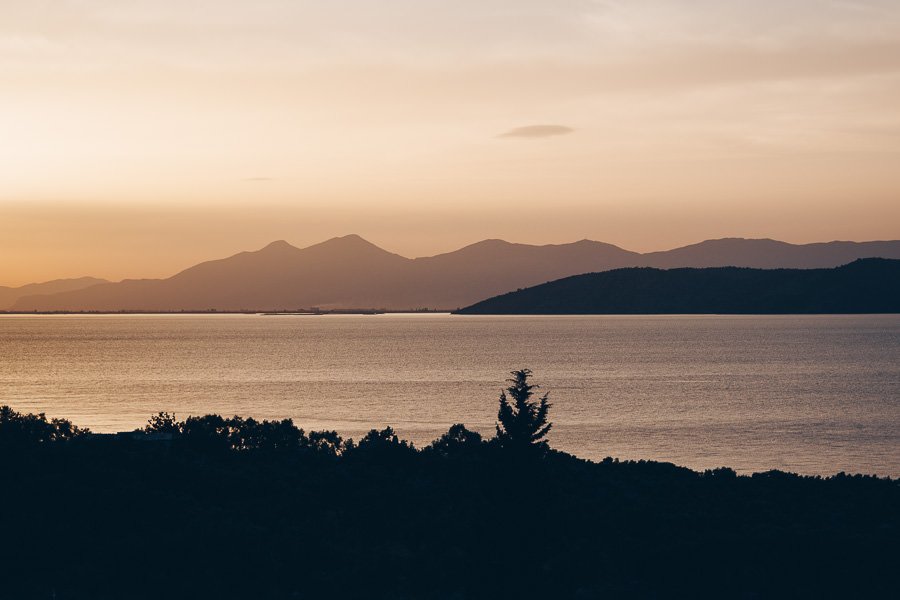
HOW MUCH DOES IT COST TO VISIT TURKEY?
With the impact of the global pandemic, the Turkish Lira has hit record lows against the Euro and the US dollar. As a result, Turkey is generally a very cheap destination for tourists.
Expect to pay around ₺17 (£1.60) for a beer; ₺7 (£0.70) for a kebab and ₺40 (£3.80) for dinner for 2 in a standard restaurant. For a top-end Michelin-starred dining experience expect to pay around ₺460 (£44).
By far the single most expensive experience will be the hot air balloon ride in Cappadocia. However, compared to other countries this is also relatively inexpensive. Expect to pay between £90 and £150.
HOW MANY DAYS DO YOU NEED IN TURKEY?
Turkey is a big country. With the extensive array of ancient ruins, the popular centres of Istanbul and Cappadocia, there’s more than enough to keep you occupied for 2 weeks.
If you have less time to spend in Turkey – and you’re not a history buff – you could turn this into a 10-day Turkey itinerary by excluding the ancient ruins. Follow our 5-day Istanbul itinerary and our 4-day Cappadocia itinerary to combine into a trip that captures the most compelling areas of Turkey.
TURKEY ITINERARY MAP
All the incredible locations we visited in Turkey are on the below map to help get your planning underway.
How to use this map / Click on the top left of the map to display the list of locations, then click on the locations to display further information. Click on the top right corner of the map to open a larger version in a new tab or the star to save to your Google Maps.
MORE TURKEY READING
Turkey is a fascinating destination with ancient ruins, magical landscapes and one of our favourite cities in the world. Here are more of our guides about this wonderful country.
If you found this guide useful, we’d love it if you could follow us on Instagram.
The best things to do in Cappadocia
Our 2-week Turkey Itinerary
The best things to do in Istanbul
Hiking in Cappadocia
All you need to know about driving in Turkey
Our 3-day Cappadocia itinerary
STAY IN TOUCH
Stay up to day with our travels on Instagram and get semi-regular updates directly to your inbox via our newsletter.
INSTAGRAM // SUBSCRIBE
SHARE THIS GUIDE
If you found this guide useful, please share it to your social media or pin it to your Pinterest boards.
